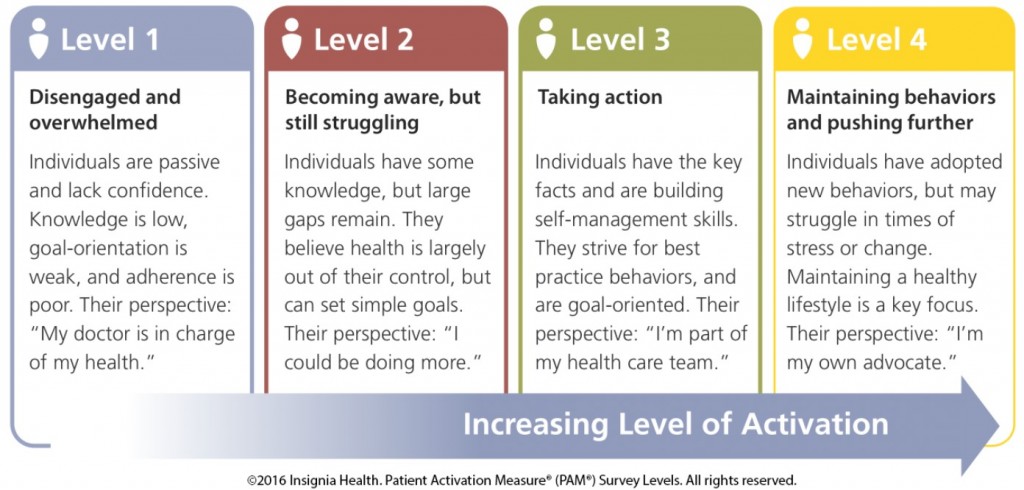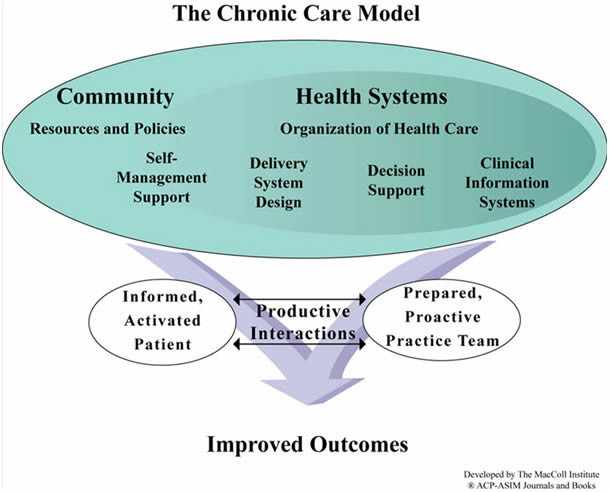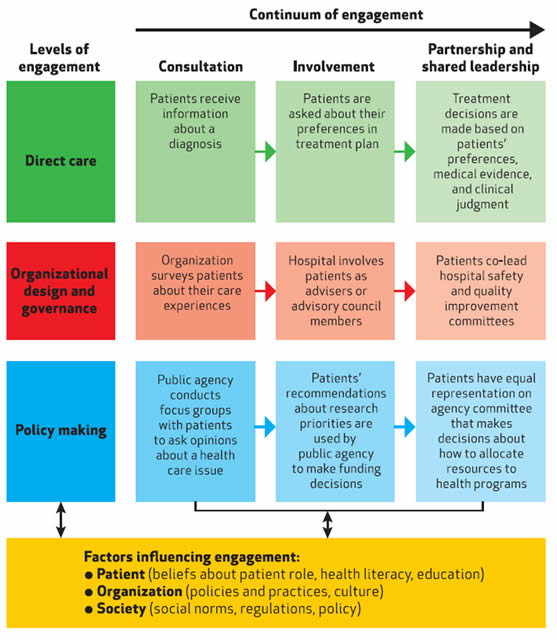It Begins with You
Patient Engagement > FrameworksFrameworks
The self-management framework emphasizes how a broad system of care can support patients, whereas the patient engagement or patient activation focuses on individual skill building. Wagner’s Chronic Care Model and the Continuum of Engagement framework show the importance of the individual, physician, and health care system in supporting patient engagement. The patient activation framework points to the importance of building up the confidence of individuals to take steps to support their own health and to interact effectively with their doctor.
Wagner’s Chronic Care Model
Wagner’s Chronic Care model describes the essential elements of a health care system that support high-quality chronic disease care and self-management. The model was developed in an attempt to address challenges in some health care systems where physicians tend to be rushed, there is a lack of care coordination and patient follow-up, and patients are not well trained to manage their illnesses. Overcoming these deficiencies requires constantly improving the health care delivery system.
As shown in the diagram below, health systems are not the only ones responsible for supporting patients; the community has a role as well. Health care needs to be organized in a way that supports self-management through delivery system design, decision support and clinical information systems. The community can develop resources and policies that also support self care, such as establishing safe parks and supporting markets that offer fresh fruits and vegetables. Wagner’s model can be applied to a variety of chronic illnesses, health care settings and target populations. The ultimate goal is to have informed, activated patients who have ongoing communication with a prepared, proactive practice team.
The Continuum of Engagement Framework
The Continuum of Engagement Framework shows that patient engagement can be characterized by how much information flows between patient and provider; how involved the patient is in organizational design and governance; and whether patient voice is heard when an organization makes policies (Carman et al, 2013). The continuum of engagement ranges from the patient being in a consultation role with minimal involvement, to becoming true partners in their care and in hospital operations and policymaking (see diagram).
Source: Carman, K.L., Dardess, P., Maurer, M., Sofaer, S., Adams, K. Bechtel, C. & Sweeney, J. (2013). Patient and family engagement: A framework for understand the elements and developing intervention and policies Health Affairs, 32, 2, 223-231.
Patient Activation Levels
Every patient is different on the continuum of how able they feel to manage their health and interact with their doctor effectively. Findings from over 180 peer-reviewed studies (Hibbard, 2015) indicate that higher activated individuals are more likely to engage in positive health behaviors, have better outcomes, be more satisfied with their care, and have lower health costs than less activated patients. Hibbard developed and tested a Patient Activation Measure (PAM) to show the level of patient activation in individual patients. She found there were four levels of activation, and these are shown in the diagram below. The value of such a framework is for providers to be able to identify the patient’s level, and then to tailor care accordingly. Those who are lower on the scale may need more information about their condition, whereas those at higher levels may need information to boost their skills and confidence.
Source: Insignia Health website.


